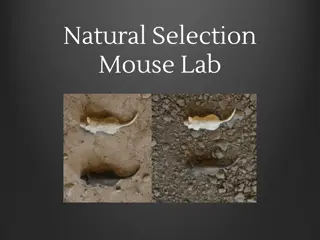Understanding Natural Selection and Its Mechanisms
Explore the concepts of natural selection, survival of the fittest, and various types of selection processes in evolutionary biology. From the struggle for existence to sexual selection, learn how organisms adapt to their environment through genetic contributions and mating strategies. Discover examples of stabilizing, directional, and disruptive selection, shedding light on the complexities of evolution.
Download Presentation

Please find below an Image/Link to download the presentation.
The content on the website is provided AS IS for your information and personal use only. It may not be sold, licensed, or shared on other websites without obtaining consent from the author. Download presentation by click this link. If you encounter any issues during the download, it is possible that the publisher has removed the file from their server.
E N D
Presentation Transcript
Struggle for Existence & Survival of the fittest Because there are limiting resources (food, shelter, competition, predation, etc ) organisms struggle to survive. Organisms that are best suited for their environment will have a better chance to survive allowing them to reproduce and pass on their traits that made them better suited for survival.
Fitness The contribution an individual makes to the gene pool of the next generation, relative to the contribution of other individuals in the population Those with higher fitness will make a greater contribution to the gene pool; those with lower fitness may not contribute to the gene pool at all
Type of natural selection that favors intermediate variants by acting against extreme population Human birth weight is usually in the range of 6.5lbs to 9lbs. Smaller babies have increased health risks. Larger babies lead to health risks for the mother. Stabilizing Selection Example
Type of natural selection that acts against the relatively rare individuals at one end of the phenotype range. Pesticide resistance in insects. Directional Selection Example
Type of natural selection that favors extremes over intermediate phenotypes Coloration of African Swallowtail extremes mimic unpalatable species; most common / non-mimic becomes easy prey Disruptive Selection Example
Sexual selection mating success It can result in sexual dimorphism differences between the sexes in secondary sexual characteristics Sexual selection is natural selection for sexual dimorphism, marked
Intrasexual individuals of one sex (often males) for mates of the opposite sex Intersexual selection choice, occurs when individuals of one sex (usually females) are choosy in selecting their mates Male showiness due to mate choice can increase a male s chances of attracting a female, while decreasing his chances of survival Intrasexual selection selection is competition among Intersexual selection, often called mate























